When you say Naples, you say Italy, with all its cultural and hospitality background. Among the stereotypes of the Italian abroad is not for nothing the famous “spaghetti-pizza-mandolino,” or three elements that characterize Naples. Therefore, it can be said that those who come to Italy cannot fail to visit Naples because in addition to being a microcosm of situations, traditions, ways of being with its culture and music, it is undoubtedly, for a tourist, an example of the culture of hospitality that makes our country attractive. Naples represents an incredible container of history and works of art with which one traverses millennia of history. Naples is an “experience” to be lived with its proverbial and scenic “daily living” by a population that still, as in past centuries, lives and works within its huge and beautiful historic center. From the underground to Capodimonte, from the waterfront to the remains of Parthenope, from the splendors of the Bourbon reign to religious devotion (from San Gennaro to... Diego Armando Maradona) with its five hundred churches, the Naples of a thousand cultures and influences has so much to offer: art has been expressed here in all forms and every era has made it its capital.Unesco made the historic center part of its heritage in 1995 with the following motivation, “The site is of exceptional value. It is one of the oldest cities in Europe, whose contemporary urban fabric preserves the elements of its long and eventful history. Its location on the bay gives the site an unparalleled universal value, which has exerted a profound influence on much of Europe and beyond.” Let’s discover 10 unusual places in Naples, far from the routes of mass tourism, for a trip a little off the beaten track.
As peculiar and unusual (the entire complex includes two places of worship: the church of Santa Monica and the church of the Consolation) as it is surprising for the works of art it contains inside: this is the church of San Giovanni a Carbonara. To the visitor, the initial visual impact is alienating since from the street one can see beyond the boundary wall a building with a severed, somewhat austere façade, from which a bell tower sprouts behind it, and beyond the wall, in elevation, two lateral helical staircases (the work of Ferdinando Sanfelice) start, leading to a raised floor, which cannot be seen from below, on which the entrance to the church faces (Gothic portal of the fifteenth century). Although it insists on a fourteenth-century Augustinian monastery, as a result of the many changes made over the years it delivers to the visitor a Renaissance impression; indeed, it represents the transition from Gothic art, with its important architectural layout, to Renaissance art, with the numerous works of art contained within. In this mixture, too, lies its distinctiveness, making it one of the most important churches in the city. The place is somewhat the Pantheon of the Angevins, and the main changes we see today (starting with the staircase and cloister) were at the behest of King Ladislaus of Anjou Durazzo. Here his sister Giovanna II Queen of Naples had the great mausoleum built for her brother who died at age 37 of syphilis. The work is what attracts attention as soon as you enter: the tomb at the back of the church rises 18 meters (60 feet). The memory of a smartphone would not be enough to photograph all the works of art that compose, adorn and fill it. The figure of Ladislaus is featured there three times: one on the throne next to his sister, one lying dead on the lid of the sarcophagus, and one riding a triumphant horse at the top. Passing under it one enters another great marvel: the Caracciolo chapel filled with important frescoes (Leonardo da Besozzo, Perinetto da Benevento, Antonio da Fabriano), some very rich polychrome marble floors, majolica and the monumental tomb of Ser Gianni Caracciolo. In the single nave of the church of note are the Miroballo Altar (which looks like a chapel) and the panel of the Crucifixion by Giorgio Vasari (who in all made 16 panels for the church), the Caracciolo Chapel by Vico.

The Pio Monte della Misericordia is a lay institution that has been involved in and charitable works for over 400 years. Like all things that are done in Naples, they are done in a big way: what was a common intention of seven wealthy and willing friends soon generated a following and so many fruits that they had to give themselves an organization. Thus was born the institute and with it the collection along four centuries of bequests and donations. Today the collection of works of art of the highest level (Luca Giordano, Jusepe de Ribera, Massimo Stanzione, Vaccaro, Mattia Preti, Fabrizio Santafede, Battistello Caracciolo, Giovan Bernardo Azzolino and Giovan Vincenzo Forlì) is one of the most important private collections open to the public. A sign of the great heart of Neapolitans. It is housed in a palace on Via dei Tribunali designed by Francesco Antonio Picchiatti whose second floor houses the famous “Quadreria,” a picture gallery that houses an extraordinary series of paintings (more than 120) made between the 16th and 19th centuries. But undoubtedly the most famous canvas is the Caravaggio present on the Church altar depicting the Seven Works of Mercy. A unique work that the Rulers of the Mount sanctioned should remain in the chapel forever and no other copies could be made.

The jewel of Baroque in Naples is the Church of the Gesù Nuovo. Situated in the square of the same name with the obelisk of the Immaculate Virgin Mary Mother of God, opposite the basilica of Santa Chiara (also a must-see for its cloister with majolica tiles), it cannot go unnoticed for its ’severed’ facade and its peculiar dark, diamond-tipped ashlar (the only case in the city) by the Master Pipernieri, dating from 1470. Originally a stately palace of the Sanseverino princes of Salerno, it was later given to the Jesuit order, which transformed it into the imposing church between 1584 and 1601. Once inside, one is struck by the contrast between the grayness of the austere façade and the splendor of the interior copiously decorated throughout the three naves of the Greek-cross plan church and its eleven chapels: polychrome marble from the floor to the altars, frescoes, sculptures and decorations. It is the Baroque gentlemen. Lanfranco (the four evangelists in the corbels of the dome), Cosimo Fanzago (the sculptures in the San Francesco Saverio chapel), Luca Giordano, Francesco Solimena (the fresco on the counter-façade), Belisario Corenzio (frescoes), Massimo Stanzione, Aniello Falcone, and Jusepe De Ribera (the altar canvases) worked there. The church consecrated to Mary sees her placed in a large niche with a majestic white marble statue at the bottom of the high altar, resting on a large blue lapis lazuli globe. On either side of the statue are the two marble reliefs depicting St. Ignatius of Loyola and St. Francis Xavier.
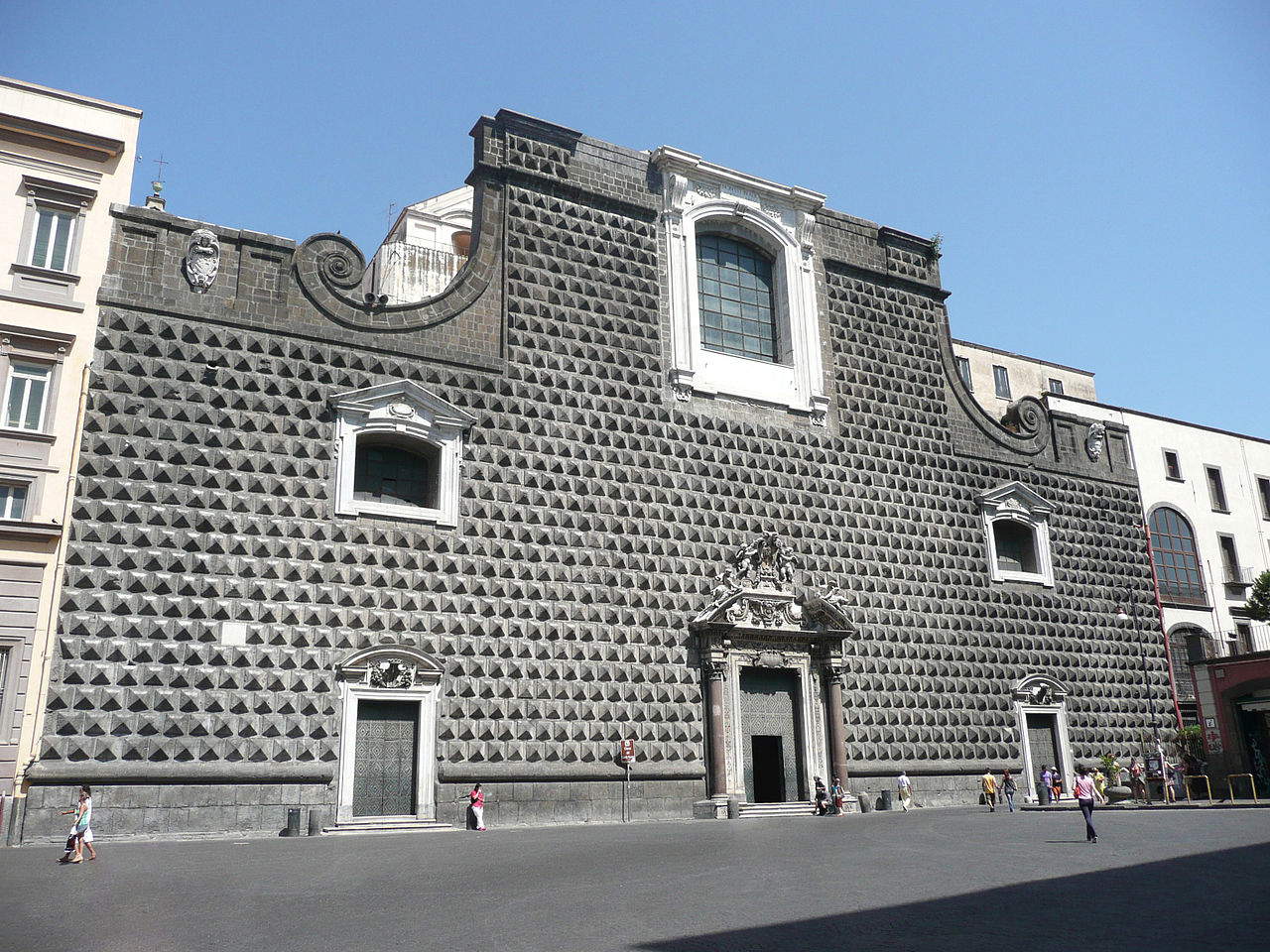
There is a film dedicated to Naples( Ferzan Ozpetek’sNapoli Velata ) that in 2018 decreed wide notoriety for the greatest example of Art Nouveau in the city: Palazzo Mannajuolo. The main feature is the large elliptical staircase. Architect Giulio Ulisse Arata and engineers Gioacchino Luigi Mellucci and Giuseppe Mannajuolo were the architects of the palace of ’dangerous curves’ who used reinforced concrete, an innovative technique for the time, for the cantilevered marble staircase with wrought iron balustrade. The staircase is a daring architectural masterpiece, built one step at a time, inserting them one by one into the perimeter core wall: a single flight where even the landings follow the elliptical shape. Between angles and corners, concave and convex forms, voids and solids, and large windows, the monumental 5-story building fits very elegantly into the context of the shopping streets of the Chiaia district.
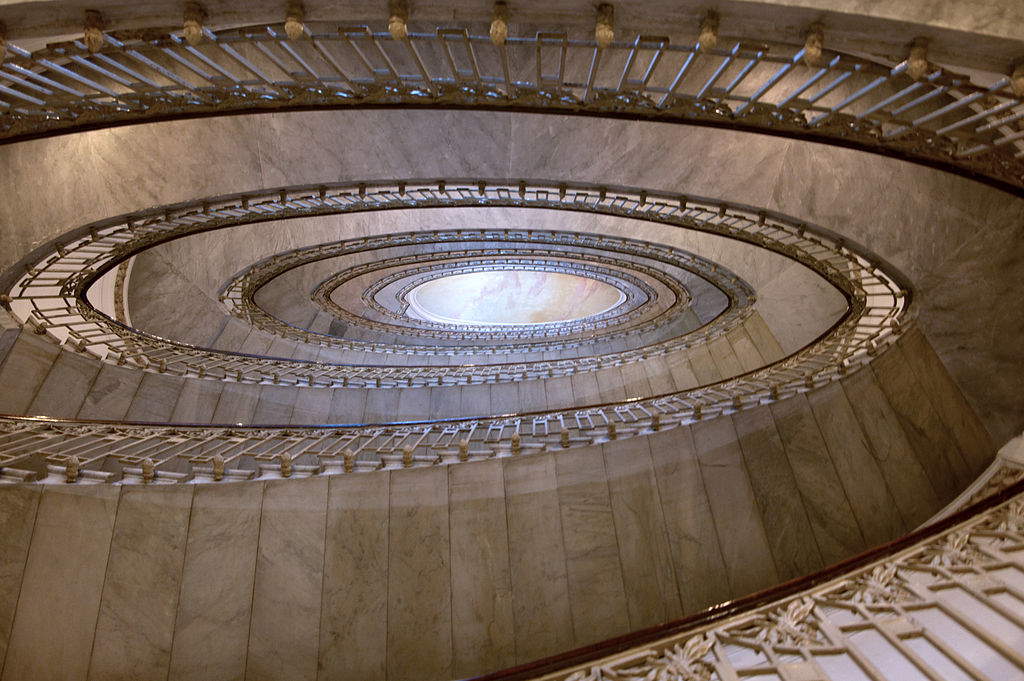
Among the iconic images of Naples is the monumental double-ramp covered staircase (resembling the wing openings of a falcon) that connects the two wings of the palace in the courtyard of the Spanish Palace. The building, in late Baroque style, in what is now the Sanità district, is called dello ’spagnolo’ because of one of the owners but was built in 1738 at the behest of Marquis Nicola Moscati entrusting the design to Ferdinando Sanfelice, who is the mind and hand also of the staircase. The stucco decorations in the Rococo style are by Aniello Prezioso from designs by Francesco Attanasio. In 1925 King Umberto di Savoia declared it a national monument. The property is fractional and mostly private so you can enter the courtyard and try to climb the stairs to see the effect, hoping for Neapolitan hospitality.

While waiting for the theatrical release of the movie about the world’s most famous doll, Mattel’s Barbie, you can take your children to see how your moms played in Naples’ quaint Hospital of the Dolls. A real museum with a collection of dolls and toys from the 19th century to the present, which after being adjusted or “restored” are put on display tracing the time of the many different childhoods of 120 years of history. We are in “Spccanapoli,” and Palazzo Marigliano is also a shelter for those who want to keep their doll but need it repaired by the special workshop. Everything was born from the skilled hands of Luigi Grassi, a theatrical set designer who also used and repaired puppets with familiarity. And like everything in Naples: a nothing thing turned into a whole of memories and emotions.
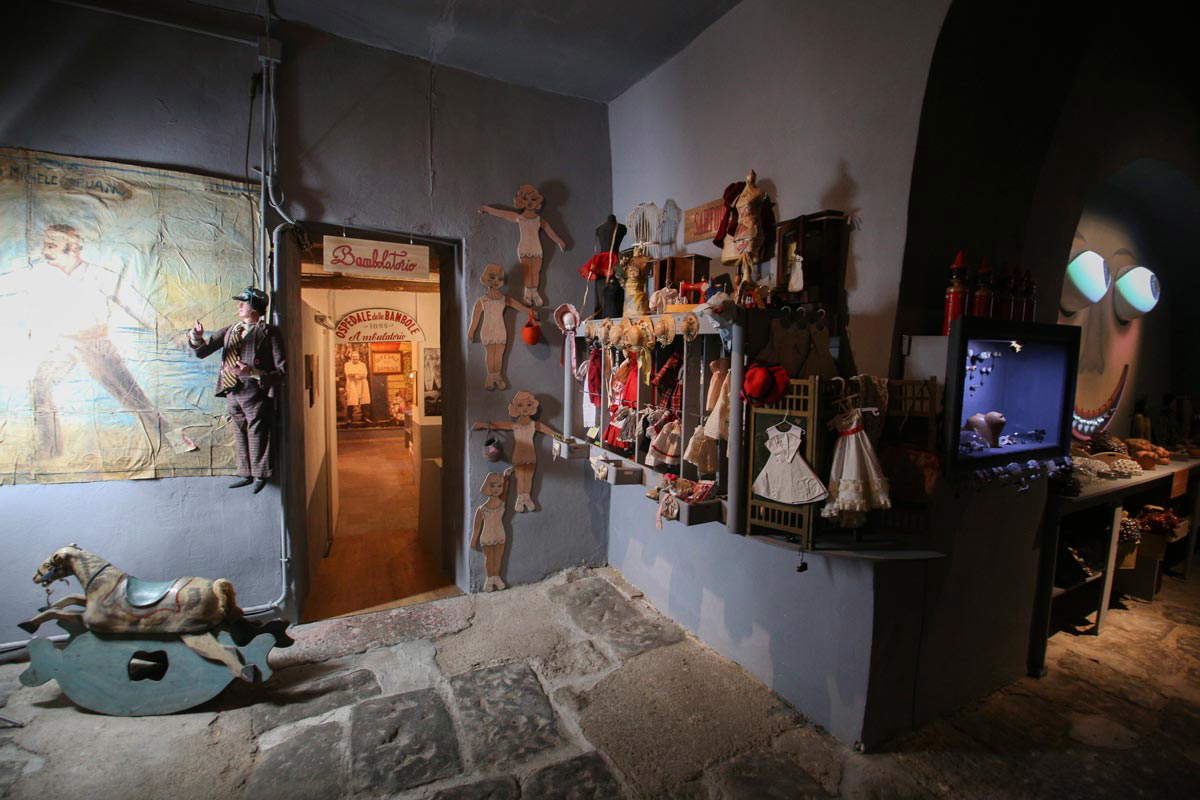
The Pharmacy of the Incurables, created by Bartolomeo Vecchione, is a recently restored true eighteenth-century Baroque-style pharmacy, part of the Complex of the Incurables (from the mid-sixteenth century) that also houses the Museum of Sanitary Arts. Naples in fact has a long history in medicine and in this context for the first time there was an attempt to investigate disease beyond superstitions or religious issues, to study in order to then cure. The hospital is still active and Naples once again amazes because 33 doctors passed through here who were later declared saints by the Roman Catholic Apostolic Church, most recently Giuseppe Moscati. The Pharmacy is a masterpiece of Domenico Antonio Vaccaro with carved walnut cabinets (with carved capitals by cabinetmaker Agostino Fucito), which contain on shelves on six levels as many as four hundred majolica jars where essences, spices and ’medicines’ were kept, and it is the largest collection of its kind in the world. To convey the importance of the collection, it is enough to say that the vases are the work of the majolica master Donato Massa, who is the same one who decorated the cloister of Santa Chiara. The floor is also majolica (of terracotta) and on the ceiling is a painting by Pietro Bardellino (Macaon healing a wounded warrior).

The Donnaregina Museum of Contemporary Art, which with deliberate originality has “Madre” as its acronym, is the main museum of contemporary art in southern Italy. The MADRE occupies three floors of the 19th-century Palazzo Donnaregina for a total of 7200 square meters where it houses a site-specific collection, located on the second floor, while on the second floor there is a permanent collection, consisting of works by the greatest national and international contemporary artists. The third floor, on the other hand, is reserved for temporary exhibitions, events and performances. Donnaregina was not a noblewoman but Santa Maria Donnaregina, to whom the monastery was dedicated, which later became the current museum adapted by Portuguese architect Àlvaro Siza Vieira in 2005. Countless artists have their works here. In Naples it was the only thing missing. Between permanent collections and temporary exhibitions, it also has a library, an educational laboratory and an auditorium. A place to experience to bring contemporary art closer to the public.
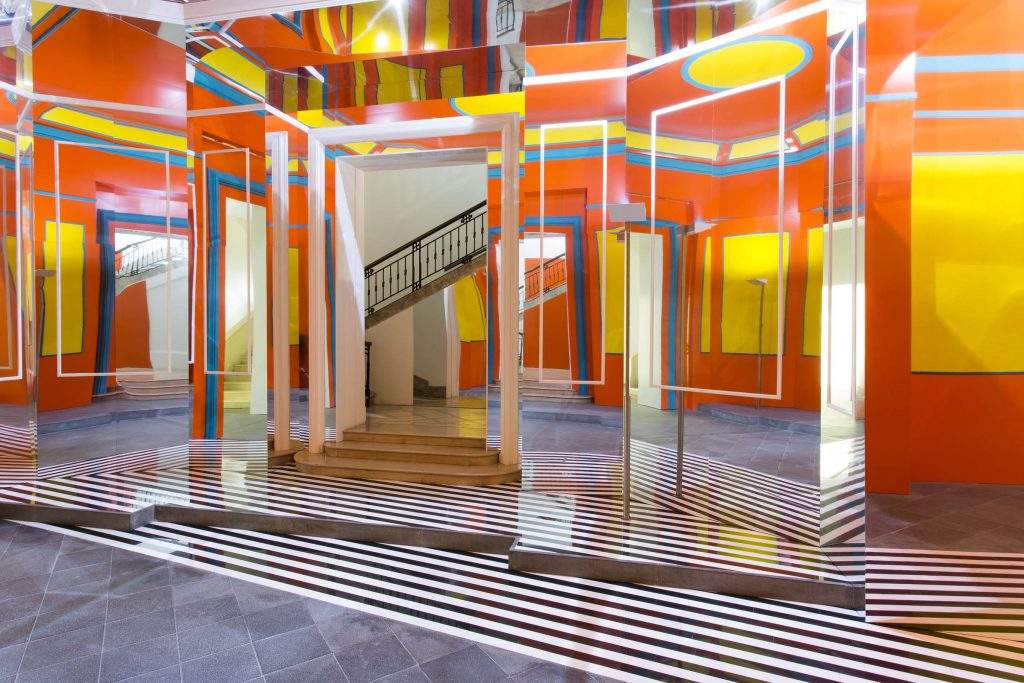
The Stock Exchange Building, now the headquarters of the Naples Chamber of Commerce, is a monumental building built in 1895 to a design by Alfonso Guerra and Luigi Ferrara. The three-story building has a neo-Renaissance style facade with two orders of pilasters and columns and various decorations, and on the fourth floor in a central position acquits great importance a bas-relief depicting Hermes and Dionysus. S this floor of reduced height the windows are separated from each other by relief statues that thus enrich its appearance. To enter it, one climbs a flight of steps with bronze lions ridden by winged genii on either side, by Luigi De Luca, allegorically representing “Genius Mastering Strength.” The appearance is imposing. The Hall of Contracts is most elegant, sumptuous and majestic. Artists such as Gustavo Mancinelli, Gaetano Esposito, Vincenzo Migliaro, Alceste Campriani, Salvatore Postiglione, Salvatore Cozzolino, Gaetano d’Agostino and Giovanni Diana, Ciro Sannino and Vincenzo Belligiono worked on the various statues and decorations there. The colors of the skillfully juxtaposed marbles and the brightness coming in through the artistic stained glass windows with wrought irons.
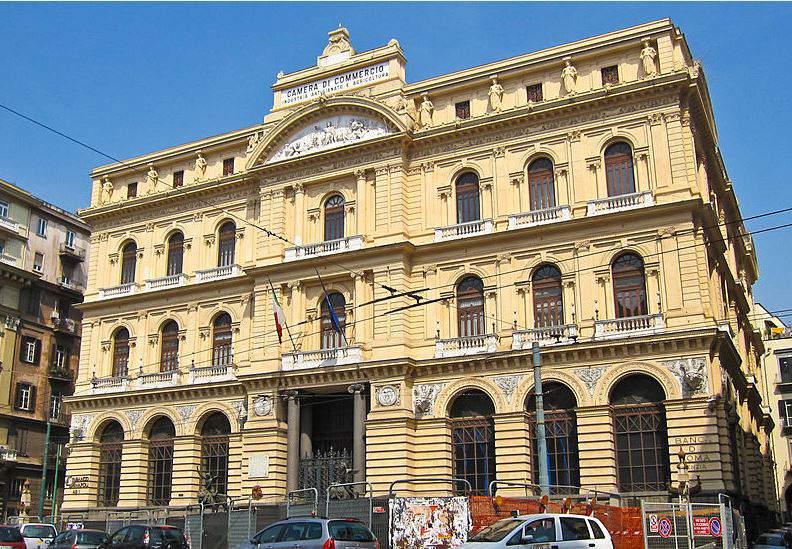
On the promontory of Trentaremi overlooking the sea we have an extraordinary archaeological site that is not as well known as it deserves to be. It is the Pausilypon Archaeological Park, which is important both for the unparalleled view (the Gulf of Naples on one side and the Gulf of Pozzuoli on the other) and for the quantity and quality of the remains found there, but also for the incredible architectural structure that was built to get there from underneath: a monumental 800-meter tunnel dug into the Posillipo tuff hill. It is the cave of Sejanus, prefect of Emperor Tiberius, built around the first century AD and renovated in the 1840s by the Bourbons, and it connects the Bagnoli and Campi Flegrei area with the Gaiola valley. At the top of the promontory was a Roman villa belonging to a nobleman who gave it to Augustus. The imperial villa had an indoor and an outdoor theater with 12 tiers of seats for a total of 2,200 spectators. A complex spread over 11 hectares of land with various pavilions exploiting the natural inclinations of the hillside and taking advantage of the sun exposure, and today the remains of the Odeion and some of the villa’s state rooms are also clearly visible, the maritime structures of which are now part of the adjacent Gaiola Underwater Park.
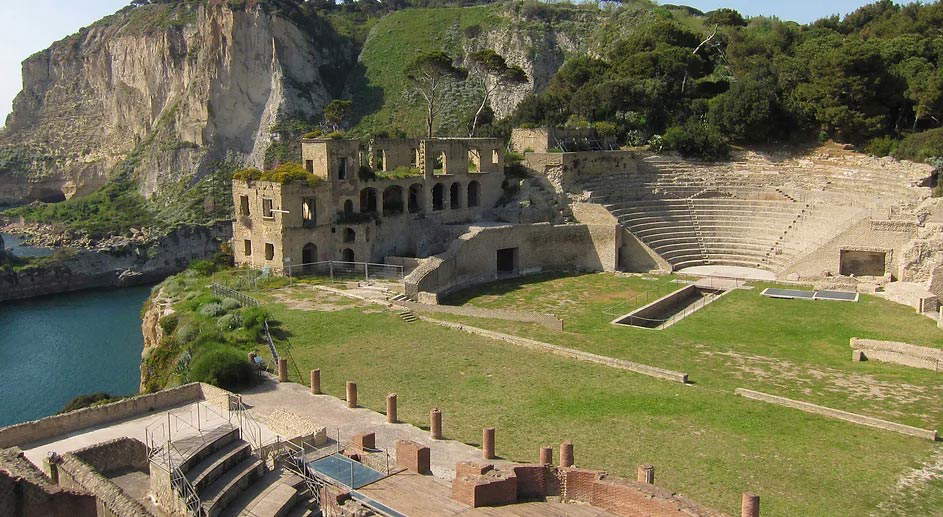
 |
| Naples, 10 unusual places off the beaten path of mass tourism |
Warning: the translation into English of the original Italian article was created using automatic tools. We undertake to review all articles, but we do not guarantee the total absence of inaccuracies in the translation due to the program. You can find the original by clicking on the ITA button. If you find any mistake,please contact us.